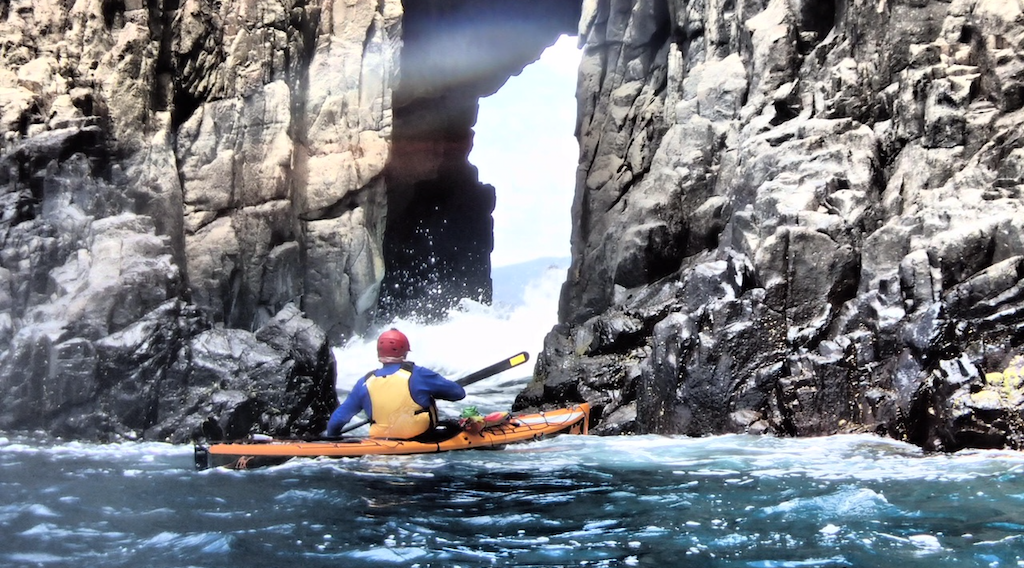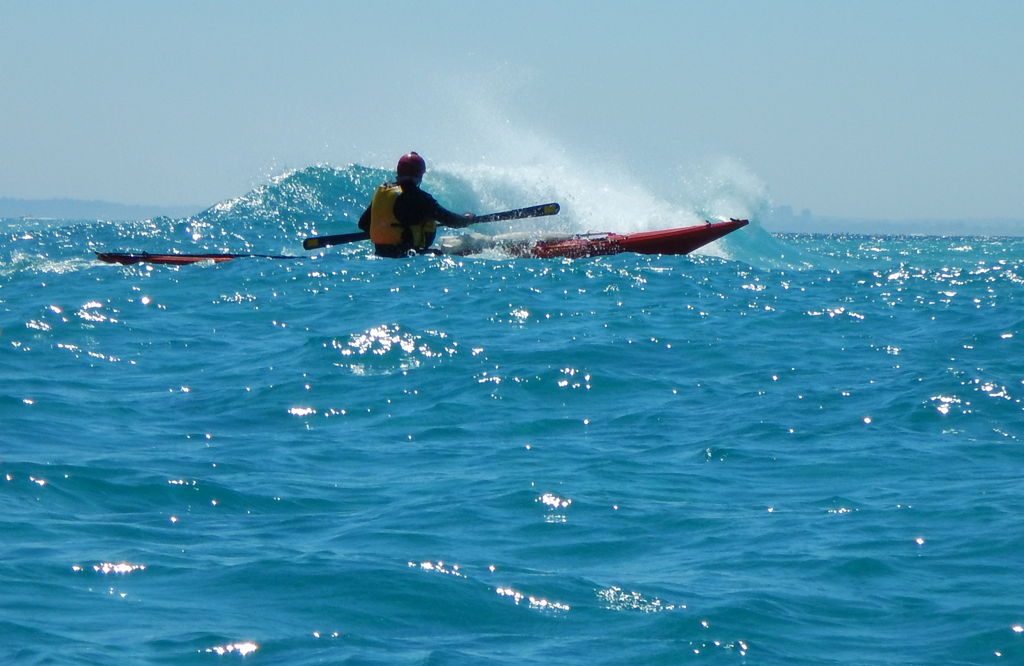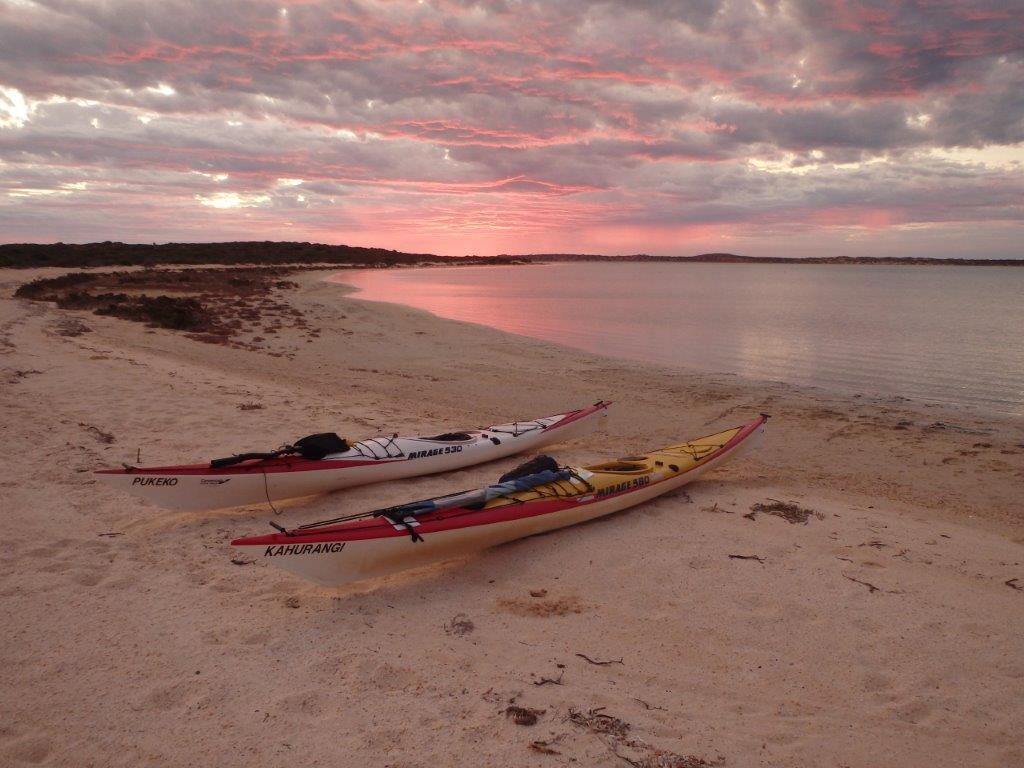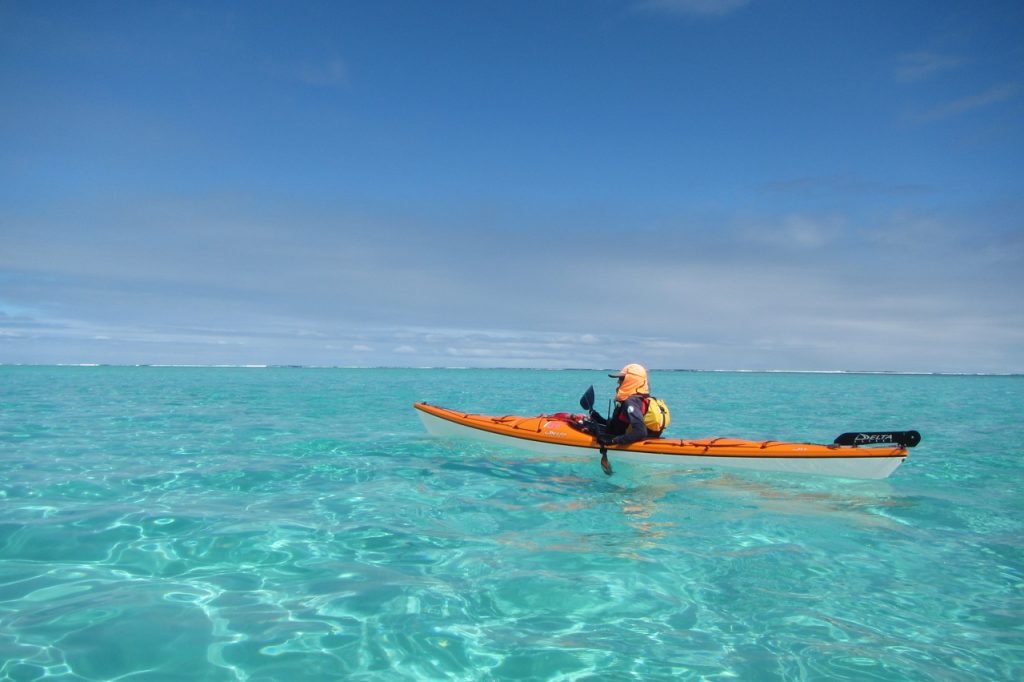Wayne Stocker
I joined the SKCWA around November 2005. During 2006 the number of times I heard Club members say “I really want to do a Cape to Cape” was noteworthy. It was on my list of things to do, too.
As my experience and skills built up I found myself and Rod Coogan paddling together a lot, both on club trips and independently. Sure enough the C2C thing came up. Rod to his credit drew on a deep well and said “the only way this will happen is to say OK we are doing it and this is when we are doing it!”. Folk familiar with the military world will know about P.P.P.P.P.P.P. (Prior Preparation and Planning Prevents Piss Poor Performance). Famous old sayings like “chance favours the prepared” and “good luck is for the ill prepared” sprung to mind. So it was off to the planning room to get stuck into it.
The decision having been made to “just do it” (apologies to NIKE), the next question was when? RKC and I have always been of a mind that trips on exposed coasts are weather dependant, so setting aside just enough days to complete the trip is fraught with danger. Our approach is to set aside a window about twice the size of the time required and then fit in the paddle with the weather conditions. So a check of our diaries and our social calendar managers (read wives/ girlfriends) revealed a couple of weeks early in December 2006 that were free. Done!
At this stage we hit rewind and went to planning from big picture stuff down to minute detail. So…What is the objective of our trip? To paddle C2C!. Yep got that. What else? To paddle at a leisurely pace as close to the coast as possible taking in the sights and with an eye to leading others on this trip. Hmmm? Leisurely pace? After our Dirk Hartog trip in 2006 we reckoned around 20 km per day, departing after breakfast and before morning tea and being off the water after lunch in time for an afternoon nap fitted the leisurely pace criteria. This was when “Gentleman’s Hours” was consolidated into the well defined genre of adventure paddling.
So drawing on many resources (Kelvin Lewis, Les Allen, Dave Oakley, and others) all we could see was long days at sea, early morning departures, late afternoon arrivals and no afternoon nap. Dividing the C2C into about 20 km days we came up with Hamelin Bay, Contos, Cowaramup Bay, Injinup Point as our camping spots. Apart from Contos, we were confident we could get into all of these spots in “most” weather conditions. More research was needed. Cunningly convincing wives and girlfriends that a camping trip to Hamelin Bay was needed, off we went on a reconnaissance mission. Contos? pretty gnarly even with a small swell, rocks, surf, etc. Redgate Beach?, the day we saw it a giant wave was breaking in about a foot of water. That same day the Cape Naturaliste wave rider buoy was reading 4 metres. We immediately crossed Redgate off the list. Just down the beach a bit is Bob’s Hollow. Again rocks, surf, etc. Grrrr. Walking further south we came upon a small beach area and even though Redgate was deadly this spot was protected by offshore reefs that provided a fairly easy landing together with a OK-ish camping site. Yippee!. The grid reference for that beach area is for sale ……just kiddin’. If any member would like detail, just speak to myself or RKC.
Rod and I then decided we needed a point of contact for scheduled contacts from ourselves and an “actions on” plan if we failed to make our scheduled contact times. This done a transport plan was finalised and it was down to the usual food, water, tent blah, blah, blah planning.
How was the trip? Basically we had good paddling conditions all the way and our landings and overnights worked a treat. All in all it was a great trip. It was our first attempt at the C2C and our planning definitely paid dividends, particularly identifying the right weather pattern. Some might think not very adventurous?. I say anyone can get themselves into trouble, the real skill is staying out of trouble and being comfortable and relaxed.
Highlights: Spooky bombie waters just north of Cape Leeuwin, tricky seas where the SE wind wave met with the SW swell, seeing a snake on a track at night at Hamelin Bay, squeezing past Cape Freycinet in rough rebound conditions, paddling past Margaret River surf break with no swell, the next day paddling past giant breakers called “Guillotine, Gallows, Widows and Wildcat”, finding an error in the Cape to Cape walk guide book at Cape Clairult the hard way, finding the best camping spot just around the corner at Injinup Point, some very weird stuff where giant depressions appeared in the waters at Canal Rocks and Sugarloaf Rock, having a “Discovery Channel” moment at Sugarloaf (i.e. just us, our boats and the sea), the “we did it” vibe rounding Cape Naturalist and personal reflections over the last few kilometers.
It was now back to reality after being self-contained in a different world paddling the iconic C2C.
There is a very special sense of satisfaction when you complete a trip that you have organized from scratch. Research, planning, implementation. (obviously drawing on those who have traveled the path before, many thanks to those folk). I do encourage club members to do the whole thing themselves. If assistance is needed, there are quite a few skilled and experienced people in our little club, access them, pick their brains, draw on their wells. The first step however is “OK I am doing this and this is when I am doing it”
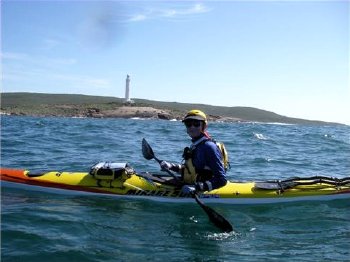 Rod rounding Cape Leeuwin – photo Wayne Stocker
Rod rounding Cape Leeuwin – photo Wayne Stocker
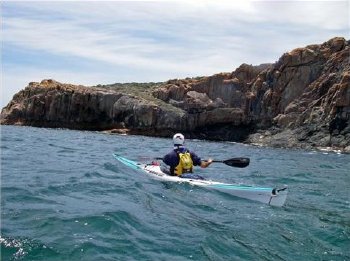 Wayne at Cosy Corner – photo Rod Coogan
Wayne at Cosy Corner – photo Rod Coogan
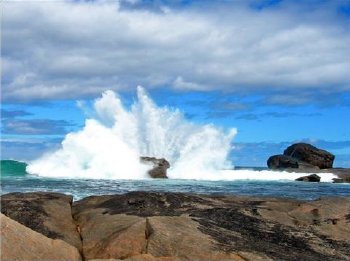 Redgate Beach – photo Rod
Redgate Beach – photo Rod
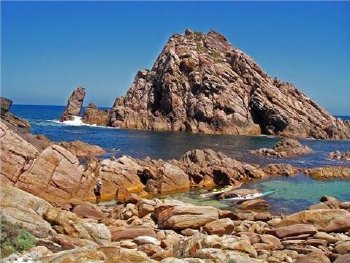 Sugarloaf lunch spot – photo Wayne
Sugarloaf lunch spot – photo Wayne
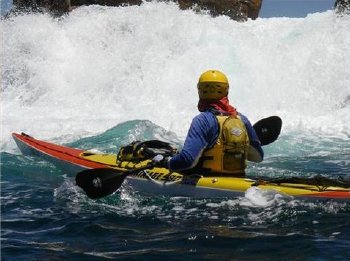 Rod at Sugarloaf – photo Wayne
Rod at Sugarloaf – photo Wayne

